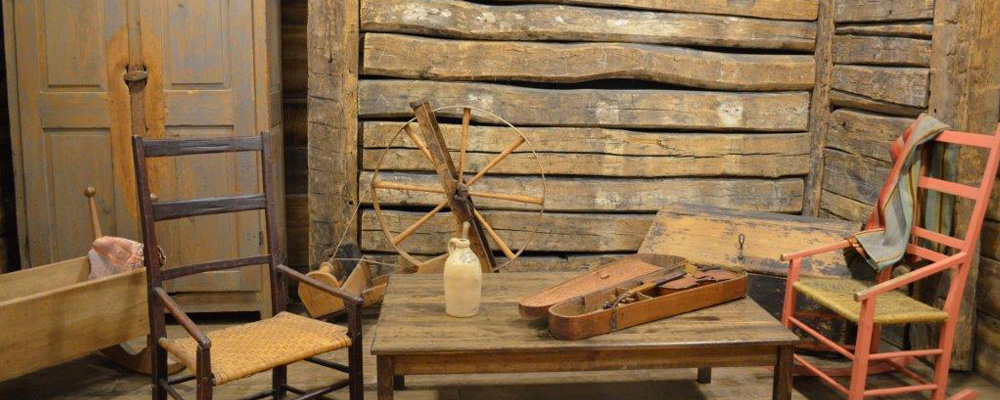Maison François Baby House Exhibits
Windsor's French Roots
Maison François Baby House. Permanent Exhibit. Opened December 2, 2015.
Exhibit Background
The Windsor area is the oldest continuously-inhabited French colony west of Montreal and was the first permanent European settlement in all of Ontario. As part of the Museum Expansion Project, The François Baby House (one of the oldest houses in Windsor) was renovated to house exhibitions highlighting aspects of Windsor's history that were important to the history of this house. As this house was built by an early French-Canadian, François Baby, locating a permanent exhibition on the history of the French in this area is a perfect fit.
The Exhibit
This exhibit explores:
- How the French came to Windsor
- French and First Nations
- French and slavery
- Life on the French Frontier
- Importance of Jesuit Pear Trees
- How Windsor's street system reflects French settlement patterns
- Changing nature of the French population over the years
- Windsor/Essex area unique contributions to the French language
- Preserving the language - the role of French Schools
- Cultural Survival
Some Notable Artifacts in the Exhibit
- Pocket sundial compass made by Roch Blondeau in Paris, France in 1671 and brought to the Detroit region by Pierre Descomptes dit Labadie - one of the first settlers to receive a land concession on the Windsor side of the river in 1749.
- Land grant to Joseph Mailloux of the Parish of l'Assumption, April 3, 1804.
- Silver trade cross made by Antoine Oneille, who moved to Detroit at the end of the 1700s where he made silverworks for John Askin, a merchant who traded with Aboriginal people.
- Walls from an 18th Century milk house located on the Parent-Janisse property, Riverside Drive East.
- Section of Erben pipe organ which measures 22 feet in height in its entirety and was donated to Assumption Church by Charles Baby and Arthur Rankin in 1847.
Exhibit Development Background
The French Community was enthusiastic from the start about the prospect of having a permanent exhibition of local French history. While the development of this exhibition was proceeding, the Ontario Government announced a celebration of 400 years of French presence in Ontario. As part of these celebrations, our community partners, L’Association canadienne-française de l’Ontario Windsor Essex Kent, and the Economic Development and Employability Network (RDÉE) applied for and received a grant from the Ontario government to help celebrate the opening of “Windsor’s French Roots”. Together with our partners, we are very pleased to be able to offer this dynamic overview of the French history of Windsor/Essex to visitors and long-time residents alike.
Special Thanks
Windsor and the War of 1812
Maison François Baby House. Permanent Exhibit. Opened February 2016.
Discover the impact of the War of 1812 in the Windsor region. Did you know the initial invasion of Canada by the Americans happened right here? American General Hull actually occupied the François Baby House (now a National Historic Site). Learn about how the British (under General Isaac Brock) and Aboriginal allies (under Tecumseh) then captured Detroit. Discover the story of what happened in the Windsor area during the war. The exhibition includes audio and video, an interactive cannon, and a flag that is purported to have been captured by Tecumseh at the Battle of the Thames.
Windsor and the 1838 Rebellion
Maison François Baby House. Permanent Exhibit. Opened February 2016.
Learn about the link between Windsor and Tasmania in this exhibit that highlights a little-known period in Canadian history. Between December 1837 and December 1838, at least 13 armed incursions were made from the United States into Canada. Did you know that the Battle of Windsor, the last of these incursions, took place just outside the François Baby House?
Santa Claus Collection by Leisha Nazarewich
Maison François Baby House. Temporary Exhibit. Opened November 15, 2025
The late Leisha Nazarewich, a long-time, and much-valued Museum Volunteer Group member, was an avid Santa Claus collector. Highlights from her extensive Santa Claus collection, representing numerous cultural traditions and eras, were generously donated to Museum Windsor and are now on display at the François Baby House.
Back To School Photographic Exhibition
Maison François Baby House. Temporary Exhibit. Opened September 28, 2025
The images in this outdoor exhibition play on the theme of “Back to School” and include photos of graduating classes, students participating in a variety of events, iconic Windsor schools, and the Windsor Red Cross School.

